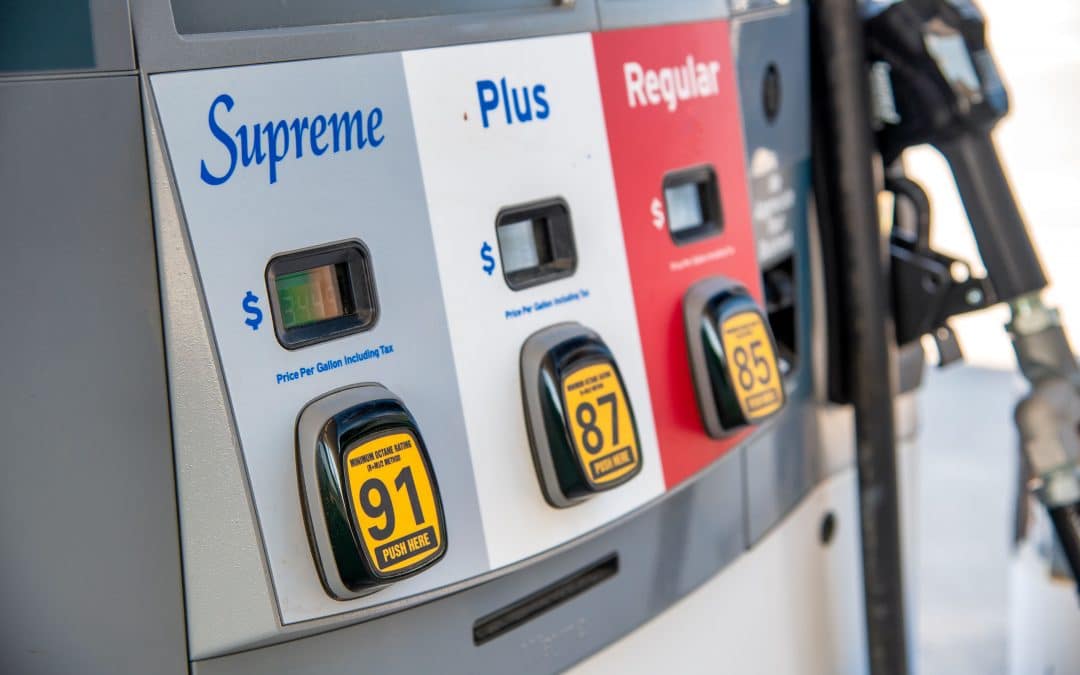Federal gas tax holiday: Biden says it will provide ‘a little bit of relief’ – but experts say even that may be a stretch
President Joe Biden called on Congress to suspend the federal gas tax to “bring families just a little bit of relief” as average gasoline prices exceed US$5 a gallon. The tax is 18.4 cents on regular gasoline and 24.4 cents on diesel. Biden’s proposal would rescind both taxes for 90 days.
Several states, such as Maryland and Georgia, have temporarily waived their state gasoline taxes to reduce the burden on consumers.
The Conversation asked four experts whether gas tax waivers are an effective way to provide economic relief to U.S. households, what revenue from the federal gas tax is used for and what other impacts these measures could have.
Not much relief
Jay Zagorsky, Senior Lecturer in Markets, Public Policy and Law, Boston University
As an economist who has studied gasoline prices, I doubt that waiving gas taxes will meaningfully lower prices at the pump. Russia’s invasion of Ukraine boosted gasoline prices dramatically, and with the summer driving season in full swing, politicians feel a need to show voters they are doing something. Cutting gas taxes makes great political theater, but as a few numbers show, it is an ineffective policy.
Government data shows that in an average day, the U.S. uses about 350 million gallons of gasoline. That is pretty close to the population of 333 million people, so on average the typical person uses about one gallon of gas per day.
Let’s assume the entire reduction of the gas tax is passed on to the consumer. That means average savings of just 18 cents a day, or $16.56 over 90 days. Sixteen dollars will buy you about two cheese pizzas. Given that before the pandemic the typical U.S. family spent about $2,100 on gas each year, $16 barely registers.
Moreover, we have some data on what happens during a gas tax holiday from when Maryland tried it a few months ago. According to the American Automobile Association, the average price of gasoline in Maryland just before the state’s gas tax holiday was $4.25 per gallon. Two days after the state stopped charging the gas tax, prices were $3.81. A 44-cent drop may look significant, but it’s not that simple.
First, not all of that decrease happened because of eliminating the gas tax. Neither Delaware nor the District of Columbia, both of which border Maryland, had waived their gas taxes. However, over the same time period, Delaware gas prices declined by 19 cents per gallon and Washington’s prices fell by almost 16 cents. These drops are partly due to falling oil prices. Florida, which is far from Maryland, saw a 16-cent drop per gallon over this same time period.
I believe the president’s proposal, unfortunately, will not provide much relief at the pump.
Less money to fix roads
Theodore J. Kury, Director of Energy Studies, Public Utility Research Center, University of Florida
Federal highway maintenance is primarily paid for with gas tax revenues that flow into the Highway Trust Fund. The federal levy of 18.4 cents per gallon, unchanged for almost 30 years, is a major component of these revenues, along with taxes on diesel fuel, gasohol, methanol, liquefied gases and compressed natural gas.
The federal government collects roughly $37 billion to $38 billion per year in revenues from the gas tax. These revenues have remained fairly consistent over the past five years, even through the heart of the pandemic. Other highway-related fines and fees also go into the Highway Trust Fund, but their magnitude is comparatively small.
In 2020, the latest year for which numbers are available, the federal government spent roughly $46 billion on highway projects. This figure does not include the subsidies that the federal government extends to state and local governments to reduce the cost of borrowing for highway projects.
But if the government collected $38 billion in gas taxes, where did the other $8 billion come from? Since most politicians strongly resist raising gas taxes, even to pay for much-needed repairs, the government has turned to less transparent alternatives.
Several times in the past decade, officials have shored up the balance in the Highway Trust Fund with intragovernmental transfers from other accounts. Most recently, the fund received $10 billion this way in October 2020 and $90 billion in December 2021. That represents $100 billion that was not spent providing other services.
If the Highway Trust Fund faces more shortfalls, program managers will either greenlight fewer infrastructure maintenance projects or transfer money from other programs. This would be the most likely outcome if Congress opts to suspend the federal gas tax.
Ultimately, taxpayers pay for everything that the government does. Policymakers simply decide how and when that will happen.
Waivers only help drivers
Erich J. Muehlegger, Associate Professor of Economics, University of California, Davis
Research shows that for decades, lower-income households have spent a larger fraction of their budgets on gasoline than higher-income households. The growing transition to electric vehicles has contributed to this pattern because high-income households in the U.S. have been more likely to go electric and, as a result, pay less in gasoline taxes.
This means that a gas tax holiday tends to benefit lower-income households relatively more than higher-income households, but there are two important caveats.
First, not everyone benefits from a gas tax holiday. The very poor who lack cars, urban households who rely on public transit, and the elderly, who tend to drive less, benefit less from a tax holiday because they consume less gasoline. A gas tax holiday can soften the blow of high gasoline prices for commuters, but it provides little direct benefit to households that do not drive.
Second, even optimistic estimates suggest that gas tax holidays produce relatively modest savings for households. That’s because gasoline taxes are a small component of the price of gasoline in the U.S., especially relative to crude oil prices.
Even if savings from a waiver of the 18.4 cents-per-gallon federal gas tax were entirely passed on to consumers, a typical motorist who drives 10,000 miles per year in a 20 miles-per-gallon Ford F-150 would see about $7.70 in savings per month from a federal gas tax holiday. Drivers of more fuel-efficient vehicles would save even less.
Consider aid for heating and cooling
Sanya Carley, Professor of Public and Environmental Affairs, Indiana University
Millions of Americans face material hardship on a daily basis, and energy costs are a primary contributor. A gas tax waiver could temporarily help relieve people who have to rely on gasoline for transportation and who live in energy poverty.
Current gasoline price spikes are happening at an especially hard time for many households.
In a recent study, colleagues and I found that 28% of all low-income households struggled to pay their energy bills from November 2021 through January 2022, and 38% carried debt on their utility accounts. Now, with higher gasoline prices, filling a 12-gallon tank can cost about $60, up from about $26 in 2020. That increase may prevent households with limited budgets from covering all of their expenses, including basic needs such as food and health care.
Households with vulnerable members, such as small children or people with chronic health issues, are especially burdened by energy expenses than other groups. Temporary relief can be especially helpful for these consumers.
But a gas tax holiday may not be the most effective way to deliver that relief, especially since these waivers are temporary. Direct assistance to households for food and energy spending, or investments in weatherizing homes to reduce their heating and cooling bills, could provide larger and more lasting benefits.
This is an updated version of an article originally published on March 24, 2022.
Jay L. Zagorsky, Senior Lecturer in Markets, Public Policy and Law, Questrom School of Business, Boston University; Erich Muehlegger, Associate Professor of Economics, University of California, Davis; Sanya Carley, Professor of Public and Environmental Affairs, Indiana University, and Theodore J. Kury, Director of Energy Studies, University of Florida
This article is republished from The Conversation under a Creative Commons license. Read the original article.




